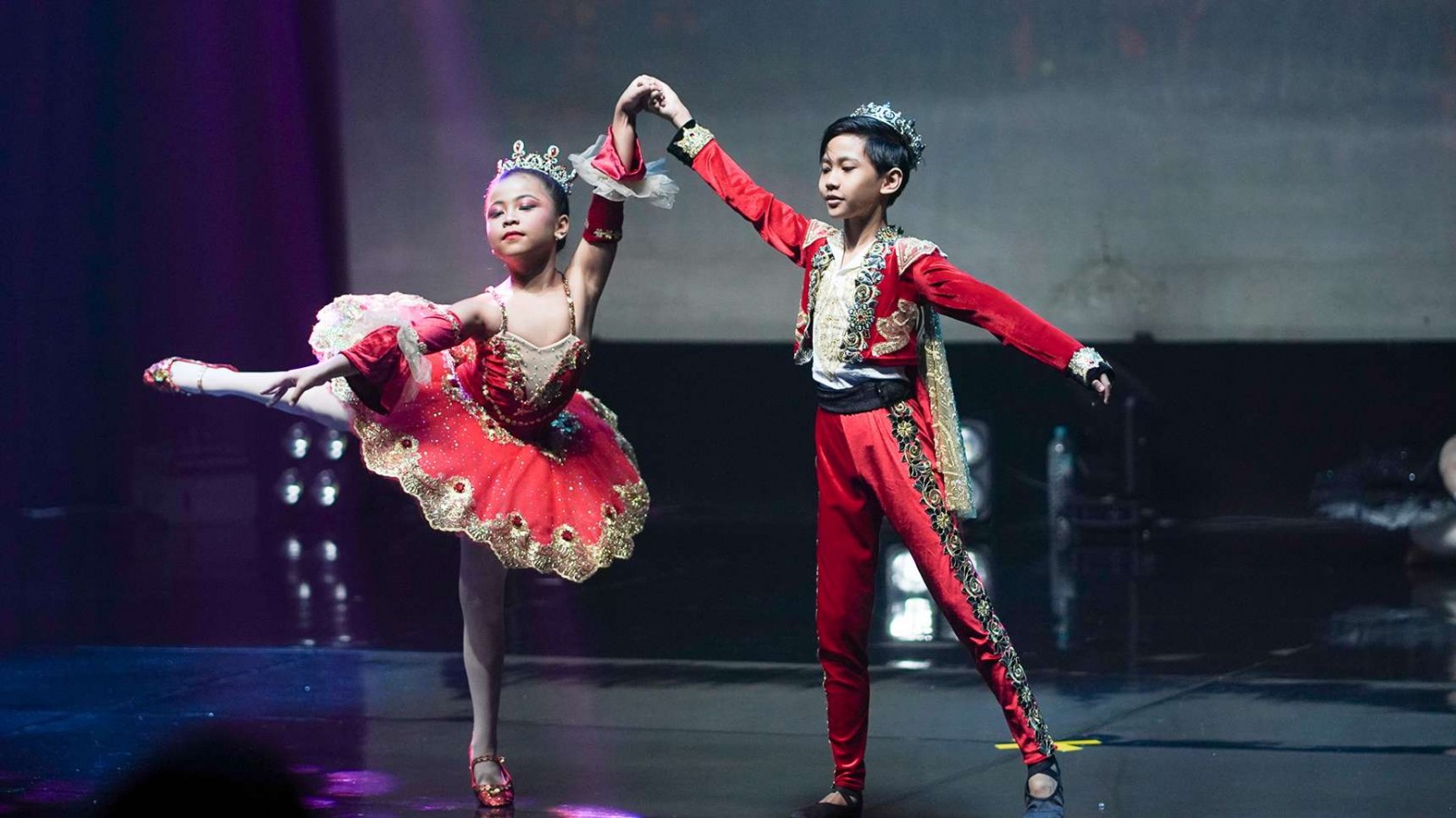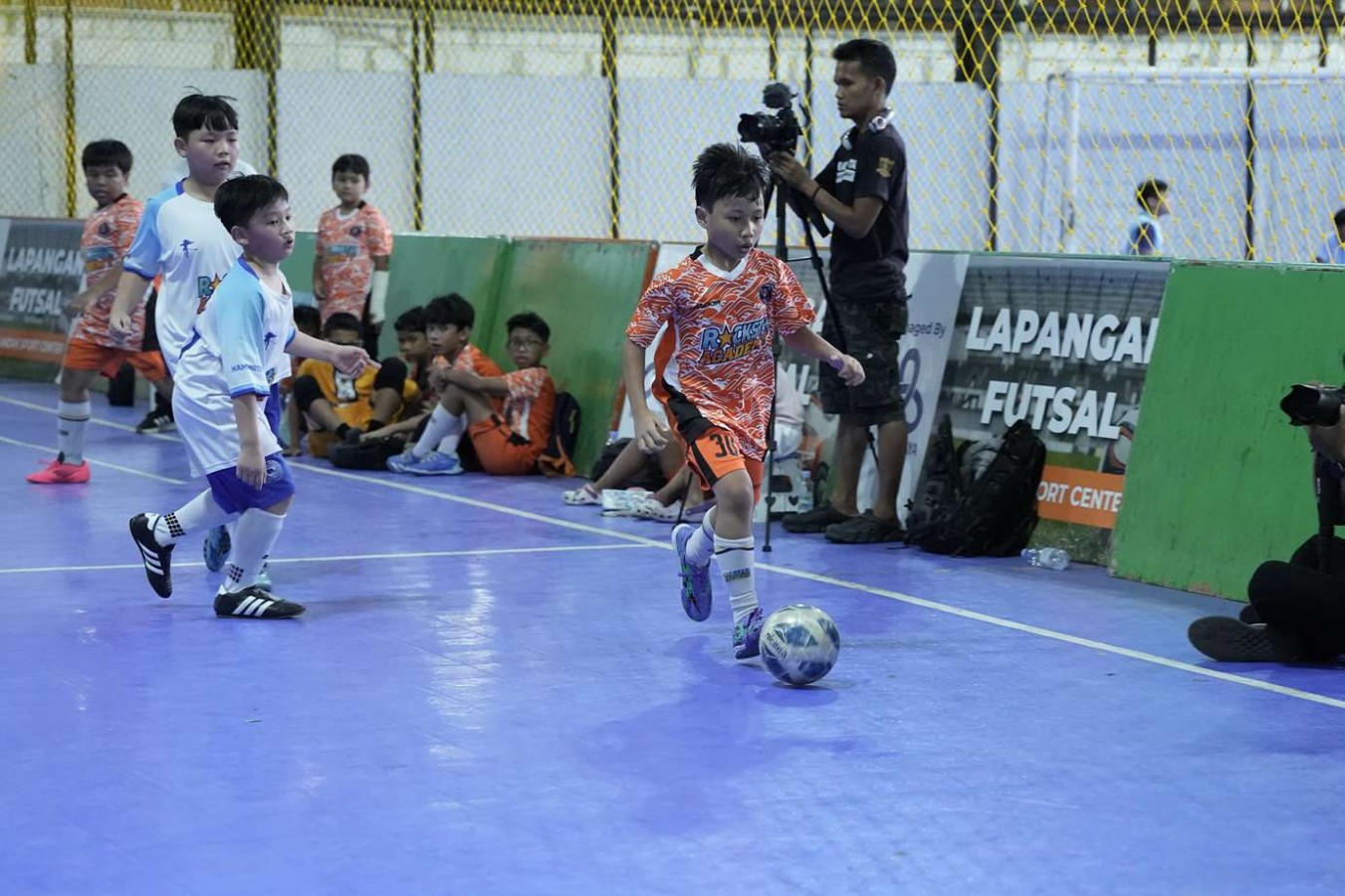Basketball Footwork Drills: How to Improve Agility and Control
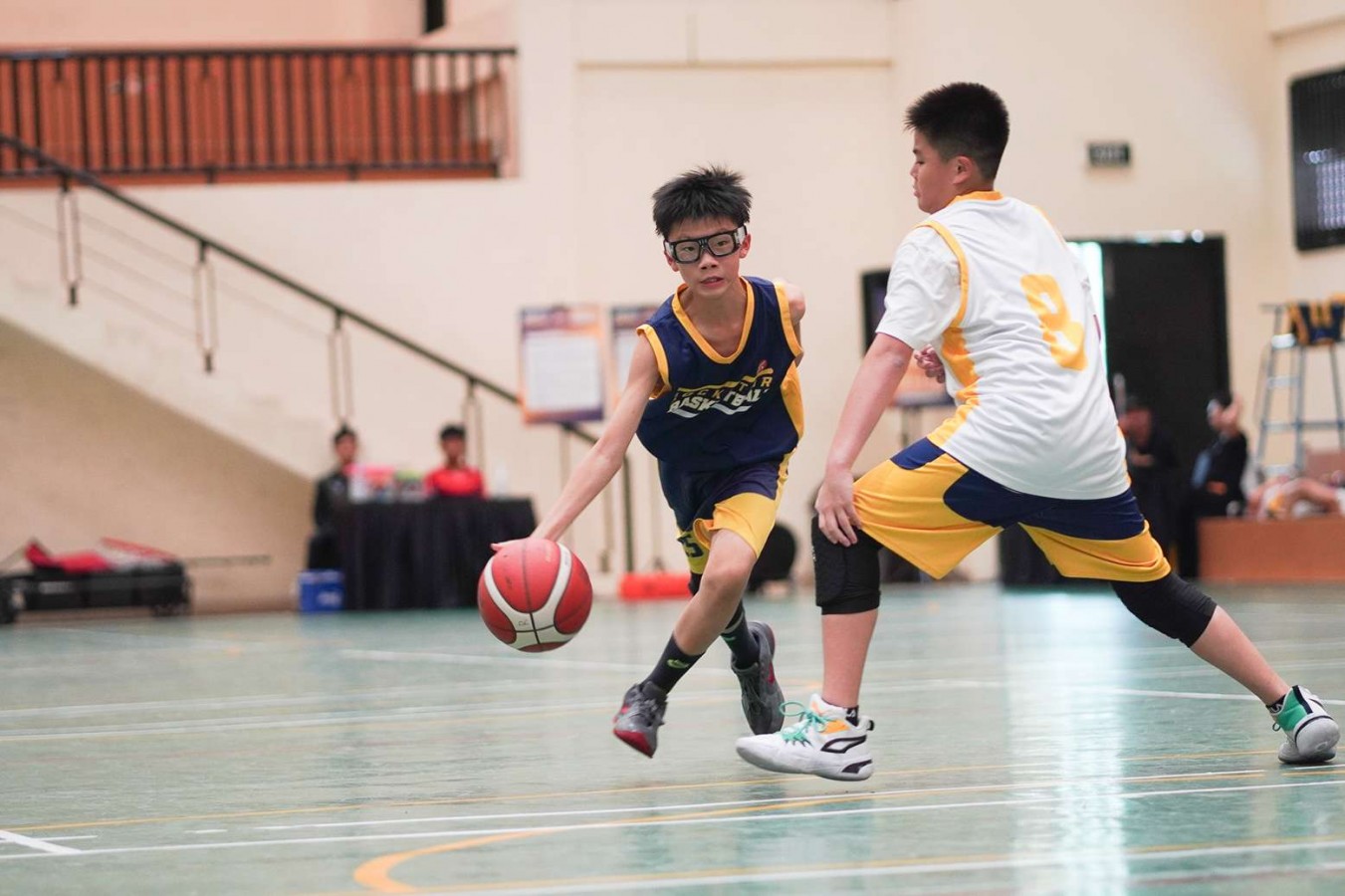
When watching a basketball competition or basketball game, it’s easy to focus on flashy dunks, deep three-pointers, or pinpoint passes. But underneath all that action lies something fundamental: footwork.
Proper footwork is what gives players control, balance, and agility. In this article, we’ll break down what footwork is in basketball, why it matters, and share practical drills to help players at all levels improve their footwork and dominate the court.
What Is Footwork in Basketball?
Footwork in basketball refers to how a player uses their feet to move efficiently, maintain balance, and execute basketball skills. This includes things like pivoting, shuffling, sprinting, changing direction, stopping suddenly, and jumping.
Good footwork allows players to stay in control, whether they’re dribbling, shooting, passing, defending, or rebounding.
Footwork is not just about speed, but more on how and when you move. Great players look smooth and effortless on the court, and much of that is due to efficient footwork that supports every part of their game.
Basic Footwork Techniques in Basketball
Here are some of the most important footwork fundamentals every player should learn and practice:
1. Pivoting
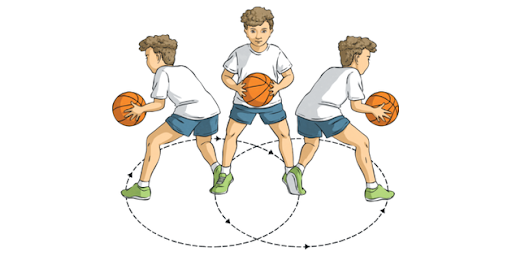
Pivoting is when a player keeps one foot on the ground (pivot foot) and moves the other foot to change direction. It’s essential for avoiding defenders and setting up shots or passes.
2. Triple Threat Position
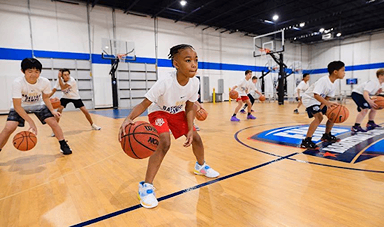
From a standstill, players need to be ready to dribble, shoot, or pass. This position starts with proper footwork and balance, usually with feet shoulder-width apart and knees slightly bent.
3. Jump Stop

This is when a player jumps and lands on both feet at the same time, stopping their movement without traveling. It allows quick changes in direction and is great for shooting or passing under pressure.
4. Defensive Slide
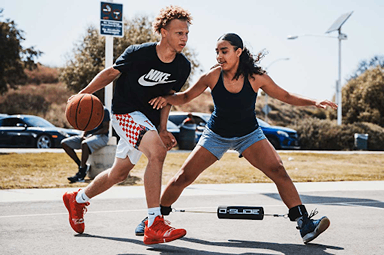
Good defenders don’t cross their feet. They slide laterally to stay in front of their opponent. Mastering the defensive slide is crucial for lockdown defense.
5. Closeouts
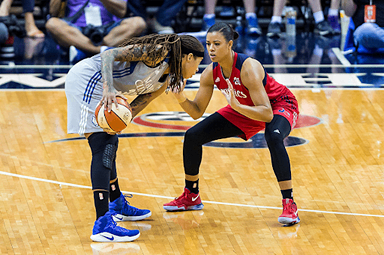
A closeout is a sprint followed by a quick, balanced stop to contest a shot. This move requires excellent foot control and balance.
Why Is Footwork So Important in Basketball?
Footwork is the foundation of nearly every movement in basketball. Here’s why it matters:
- Enhances Agility and Quickness
Great footwork helps players change direction quickly, evade defenders, and move efficiently without wasting energy. - Improves Balance and Control
Shooting, passing, and dribbling all require a stable base. Footwork provides the balance needed for accuracy and control. - Boosts Defensive Skills
A defender with strong footwork can stay in front of their opponent, cut off drives, and contest shots without fouling. - Creates Offensive Opportunities
With solid footwork, players can fake defenders, drive to the basket, or create space for shots. Moves like jab steps, spin moves, and Euro steps are all footwork-based. - Reduces Injury Risk
Controlled, intentional movement helps prevent awkward landings and overuse injuries
How Does Footwork Affect Basketball Skill?
Footwork is the base of everything you do in basketball. It’s how you move your feet to stay balanced, in control, and in the right position on the court. Good footwork helps you shoot more accurately, dribble without losing the ball, defend better, and get into spots where you can score or stop your opponent.
If your footwork is poor, you might lose your balance, move too slowly, or make mistakes like traveling. But if your footwork is strong, you can change direction quickly, stay in front of your opponent, and make better plays.
For example, when you do a quick pivot to pass around a defender or slide sideways to block someone from driving to the basket—that’s all footwork. Even when you’re taking a shot, the way your feet are placed can make the difference between a miss and a perfect swish.
In short, better footwork = better basketball in every way.
Basketball Footwork Drills to Improve Agility and Control
Here are some effective basketball footwork drills to add to your training routine. These drills focus on speed, balance, reaction time, and coordination.
1. Jump Stop to Pivot Drill
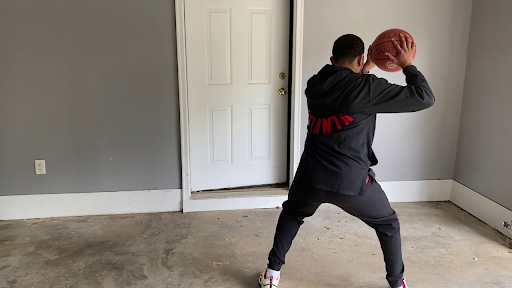
This drill teaches balance, stopping power, and pivoting. Helps with changing direction under control, especially during offensive moves.
How to do it:
- Start at one end of the court.
- Dribble a few steps, then perform a jump stop.
- From the jump stop, pivot 180 degrees.
- Repeat across the court, alternating pivot feet.
2. Zig-Zag Defensive Slides

These defensive basketball drills improve lateral quickness and defensive positioning. Builds endurance and defensive control.
How to do it:
- Set cones in a zig-zag pattern across half the court.
- Assume a defensive stance and slide from cone to cone.
- Keep your chest up, arms out, and feet from crossing.
3. Ladder Footwork Drills
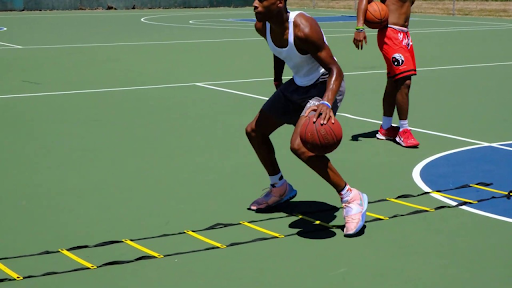
These drills help boost speed, coordination, and quickness. Trains your feet to move fast and precisely, great for both offense and defense.
How to do it:
- Use an agility ladder on the ground.
- Practice different patterns like:
- One foot in each square
- Two feet in each square
- Lateral hops
- In-and-out steps
4. Jump Stop and Shot Drill
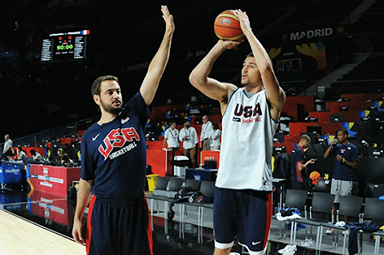
These drills combine stopping, balance, and shooting. Simulates in-game situations where players must stop quickly and shoot under control.
How to do it:
- Start at the 3-point line.
- Dribble toward the hoop.
- Perform a jump stop at the free-throw line.
- Shoot a jump shot or pass to a partner.
5. Mirror Footwork Drill (with Partner)
.png)
These drills sharpen reaction time and defensive agility. Builds footwork responsiveness and simulates defensive footwork under pressure.
How to do it:
- Two players face each other in a defensive stance.
- One player (leader) moves side to side, forward, and backward.
- The second player (mirror) mimics their movement.
6. Cone Pivot Drill

These drills develop pivoting and foot coordination. Teaches players how to pivot while maintaining balance and scanning the court.
How to do it:
- Set up cones in a square pattern.
- Start at one cone, dribble to the next, stop, and pivot before moving.
- Rotate clockwise, then counterclockwise.
How’s Your Basketball Footwork Drills?
Basketball footwork is the key to success on the court, it lays the foundation for agility, balance, and total control in every move. If you're serious about helping your child build strong basketball fundamentals, enrolling them in a structured basketball program can make all the difference.
At Rockstar’s Sports & Performing Arts Academy, your child can develop their skills in a supportive, professional environment equipped with world-class facilities, certified coaches, and a wide range of sports and performing arts programs tailored to all ages and levels.
Our basketball program doesn’t just focus on training skills, but we also give students exciting opportunities to put those skills to the test in real games. Players can compete in major events and competitions like RockOlympics and the Elite Championships, gaining valuable experience and building their confidence on the court.
For those who show exceptional talent and dedication, we offer the Dream Team Program, which provides motivated athletes the chance to develop the character of a True Champion by competing in various tournaments both across Indonesia and internationally.
Not sure if it’s the right fit? No problem! Rockstar Academy offers a free trial class, giving you and your child the chance to experience the program firsthand before committing. Take the first step toward building your child’s confidence, coordination, and athletic future. Join Rockstar Academy today!
FAQ
How often should I practice footwork drills?
Aim for 15–30 minutes of footwork drills 3–4 times a week. You can even mix them into your warm-up or conditioning.
Can beginners do footwork drills?
Absolutely. Beginners benefit the most from building strong footwork early on. Start slow, focus on balance and proper movement.
What’s the easiest footwork drill to start with?
The jump stop and pivot drill is beginner-friendly and teaches two key fundamentals. Start there and gradually add more drills.

